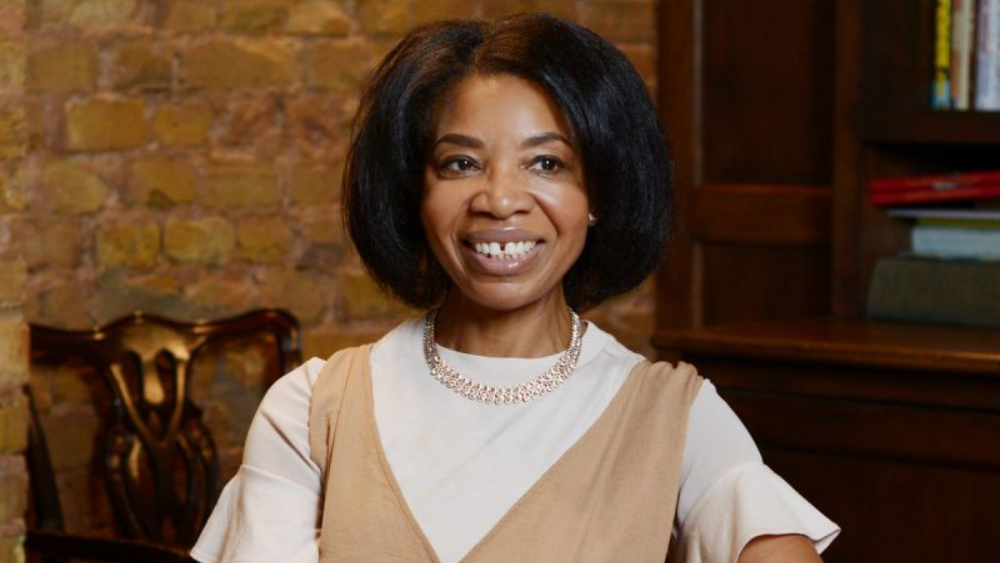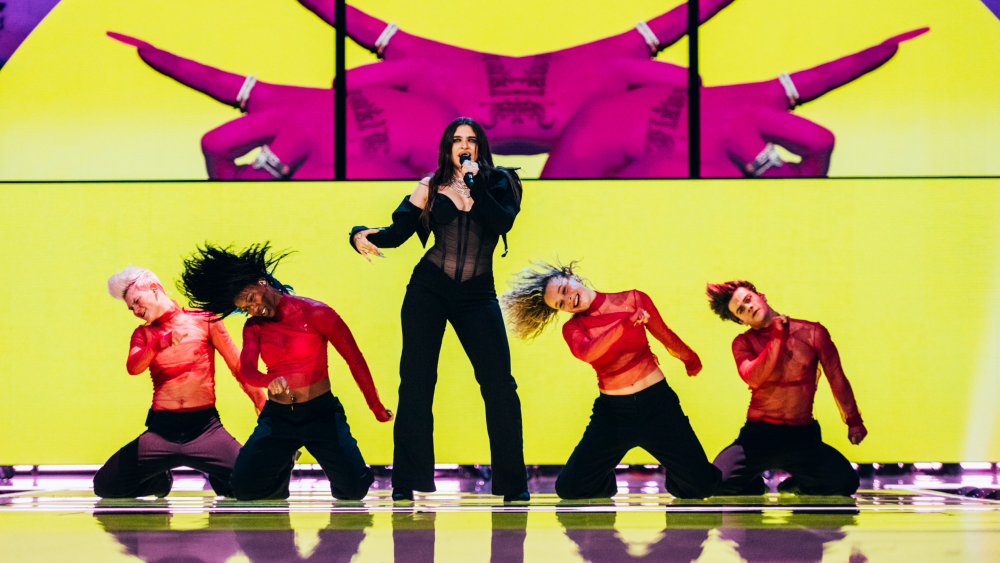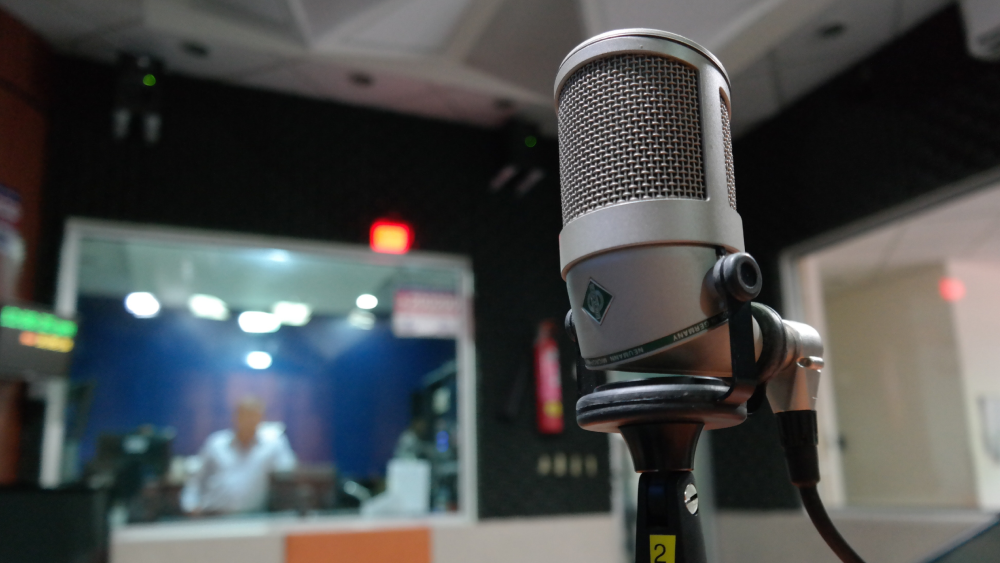A diamond in the lockdown darkness Róisín Murphy and her critically acclaimed 2020 album Róisín Machine did more than teach us how to pronounce her first name. It brought memories of dancefloors much missed, forging communities together desperate for reunions with the hope that whatever this new reality is, it will always have a sleazy Murphy bassline as its soundtrack. Kate Wildblood caught up with Róisín to talk about the collaborative process behind her work, the art of the remix, the realities of virtual performances, the future of nightlife culture and how Ms Jones giving good Grace inspired a lifetime of creativity.
'Dance music culture itself is not just about consuming it, creating it, consuming it, creating it. That’s what’s beautiful about it.'
Kate Wildblood: The album is a collaboration with Richard Barratt aka Parrot aka Crooked Man, the infamous Sheffield producer. How did that come to be?
Róisín: We’ve known each other a long time but having left Moloko I went off with Matthew Herbert to make my first solo album Ruby Blue and it was sort of a chrysalis moment really, I went in a worm and I came out a butterfly! Then when I started doing Overpowered, I knew I’d be working with lots of different people, but I wanted Parrot to be involved somehow. I began to play him stuff I was reaching for, things influencing me and things that I’d been working on. I wanted to go deeper into dance music and I wanted to do it with him. I’ve always got lots of music people in my life but he’s the one I trust the most, I know he won’t tear it asunder, even if he doesn’t like it.
Kate: What were the mechanics behind the songwriting and production process with Parrot?
Róisín: I work remotely with everyone now, I have the music software here, the microphone, the soundcard, it’s like playing with a little four-track used to be but I can do it to a level where I can use the vocals. But in a lot of cases, Parrot wouldn’t use those vocals, he would make sure I’d do ‘proper, proper vocals’ (Róisín adopts a Sheffield accent) ‘come to Sheffield, stand’t in’t booth!’ as he would say. But then say when working with DJ Koze on the next record that’s nearly finished, he likes it remote. His world is Ableton, his instrument is that, and so he wants the whole session from me, the mistakes, all the options and so he‘s much more sonically inclined whereas Parrot always has his eye on the song. That’s his strength.
I was watching the Clive Davis’ Soundtrack Of Our Lives documentary and he had this genius for saying to an artist, say Barry Manilow an established composer and arranger, ‘yeah you’re really great and you’ve done some really good songs but you’re going to have to do these other songs I’ve picked out that other people have written. Manilow would be screaming and shouting ‘that’s not what I’m about, I’m not doing it’ and yet, well a zillion, million sales later... And Parrot’s really good at that, that’s his strength, an architectural understanding of songs and hooks.
Kate: Track one of Róisín Machine and the moment Simulation starts you just know you are on a promise. But it’s an older tune from 2012 so did you have it waiting in the wings for its moment?
Róisín: I knew Simulation was part of an album anyway back then but Parrot and I went off the path for some reason or another as I was putting out the Maurice Fulton stuff (2018’s series of EP’s All My Dreams / Innocence, Plaything / Like, Jacuzzi Rollercoaster / Can’t Hang On and The Rumble and World’s Crazy on The Vinyl Factory). The chance to work with Maurice was a sort of burning ambition. Yeah, there’s a sense of deep appreciation of all these guys that I have worked with, but I’ve not pursued them as much as I did with Maurice, as soon as he said he was ready I had to jump. Parrot really wanted to put out Incapable then though and I said you’ll have to wait till the Maurice releases are out! And this is my problem you know; I’ve got all this great music and more and more great people asking to work with me and I’m having to not work with people I normally would in a heartbeat because there isn’t the room to put it out. I don’t want to annoy people with new music every five seconds, everyone thinking ‘oh no, here she is again!’ But really what kicked us into place with releasing Róisín Machine was being signed by Damian Harris at Skint. Going back to when we finally released Incapable on Bitter End in 2018 everyone went mad for it and Damian was just lovely, wanted to make an album and saw that there was some kind of market for it.
Kate: The sublimely subversive singer-songwriter Amy Douglas wrote Something More for you but just how did this connection to the most fabulous of native New Yorkers come to be?
Róisín: She had worked with Parrot, so we became friends on social media and then we had a date in London about two years ago, going to a talk with Andrew Weatherall about the science of dub. Amy wanted to do something for me and I thought, ‘I already have Murphy’s Law’, I knew that was there and incredibly strong but it needed something of that strength to hang the other end of Róisín Machine off. I didn’t want the pressure, so I let her take the pressure, which was a great idea of mine, it was rather Clive Davis-ish of me in fact! I’ve never done that before, asked somebody to write a song for me, never said here you go, there’s your challenge, Challenge Anneka. I envisaged it as a classic Hi-NRG thing and so did she but it wasn’t fast enough as it scanned so the initial version Parrot and I did was a bit more funky and jivey, more ‘80s, more fun pop but that still didn’t feel right. Then we went into lockdown and Parrot had done a load of remixes of it and the main version turned out to be one of those remixes – it just felt right at that moment. I didn’t want to come in all guns blazing and nice. It always had a bit of melancholy in it and it felt like there was a bit of Andrew Weatherall in it too.
Kate: And seeing as we’re on a female rollcall of extremely talented souls, how did you get Colleen Cosmo Murphy, DJ, audiophile and founder of Classic Album Sundays to do her remix of Murphy’s Law?
Róisín: I think she just wanted to remix it, that’s the way she operates, she does very few remixes and if she wants to mix something then it’s bonanza times! God, it was an amazing mix when it came in, I was flabbergasted. Working out who does remixes can be a bit of a headache, it’s complicated and when it gets all confused with ‘not artist things’, it can be a pain in the arse. It was my final straw with my first label because I wouldn’t put out a remix that they had commissioned on one of the Herbert tracks, so they fucking finished with me. (Róisín laughs) I felt like I was dumped, like a girlfriend!
The art of the remix is so important, some remixes and reworks are some of my most favourite things in the world ever. Dance music is meant to live on, to be repurposed and even at the point of consuming it on a dancefloor it can be manipulated, changed, looped and different frequencies can be pulled out of it, if you are clever enough sonically. And the remixer has to feel something for the tune. The same was true of Moloko’s Sing It Back, it was a calling that Boris Dlugosch had, and from that came something wonderful. A great remix happens for a reason. Parrot and I have a remix album coming called Crooked Machine coming out soon and it’s better than the album, it's ridiculous, absolutely ridiculous. Parrot has done these suites of mixes or dubs of the songs every time there’s been a single and he’s taken all those songs to places, to complete different rooms and spaces, he’s repurposed it and that’s part of the DNA of the music itself of where it’s come from. It’s not come from a nice place, it’s come from a dirty place (Róisín’s attempt at a Sheffield accent is back), a dirty bastard cellar in Sheff!
Kate: Your social media has always been iconically ironic with your Instagram account a lockdown saviour! How important is it for you as an artist?
Róisín: Ha! Compared to most popstars I’ve got about forty-five people on there. (Laughs). But yeah, I’ve used it like a notebook in a way and then I’ve used it to advertise and I’ve also used it as a reference for imagery. If you make the right friends there you find great stuff. Luke Unabomber keeps me alive like he does many people, as does his radio show on Worldwide FM. Every single day I'm listening to it, I’m going around the countryside here in Campo listening, just walking and dancing, walking and dancing. He’s here with me. Those kind of things are amazing about the internet.
'Each individual artist regardless of gender requires a totally individual plan and all I can say is that I did everything I did for the love of the music.'
Kate: How are you finding the world of virtual gigs? HomoElectrics, StayHomo, and your incredible Mixcloud Live concert showed us how an artist could redefine this new world of performing. How did the creative process differ for you?
Róisín: It’s not that different, it’s just a pivot. I’ve always been making videos and creatively directing my visuals myself. I’ve never had a creative director do it for me on a show. I pour myself into all these things for as much as I can until it kills me. The Mixcloud gig was running the gamut, it was the first time I had ever done anything like that, direct, set and style it, work with the lighting guys, performing at the same time, to be thinking about a visual edit while you’re singing songs. We only had one day to shoot it, so it was more or less shot in one continuous flow which gives it an energy, like a live performance. I think it really worked out; it was a beautiful film. It didn’t make any money at all though. You’ve got to bear in mind an artist like me has a band and to put together a show, just to rehearse it, costs thousands and thousands of pounds. Just a very small fraction of your fan base will sign up for it because it’s complicated to do. Then people assume they will see it online for free so I’m not sure if it’s such a fantastic model going forward for the industry to make money. The other important thing is my crew, normally they’d be paid night after night, but this is just one day’s work for the crew, one gig. It hasn’t proven itself to be a great project money-wise, but creatively it’s very interesting to be putting together a gig and for me as an artist to have that ability, that’s a bow for my arrow.
Kate: What have you learnt as an artist since you started and is the confidence you appear to have something learned or given? How has it developed over your career?
Róisín: Oh yes, I really am very confident. (The laugh returns). I’m very determined and I’m very driven but I’m not always 100 percent confident. I’m driven by the feeling I might fail or about being insecure. But it creates a kinda fire in my eyes that obviously I didn’t learn, I was born with it I suppose because I’ve always had this certain reaction to things and it frightens people a little bit but it’s not confidence, it’s just drive, it’s just destiny.
Kate: Female beacons – who lit the way for you?
Róisín: I saw Laurie Anderon on telly when I was a kid and I never forgot it. My mother has got fantastic taste even if it’s weird shit, she was always into mad music, always knew what a good tune was. Grace Jones, always Grace Jones. When I was a kid back in little town Ireland our family friends had put the Island Life album on the fireplace in their front room so everybody who came in saw it. She’s there with like the one leg with the microphone in her hand and everyone would say like ‘what the fuck?’ Honestly, we didn’t know if it was a man, a woman, an alien. Because it was extended, beyond human, that really left an impression on me and then when I heard Pull Up To The Bumper on Top Of The Pops and she was there with the fucking suit on!
I loved Madonna when she came out first, Dee-Lite when I was in Manchester and Siouxsie Sioux. I got really into Cosey Fanni Tutti imagery when I was getting juiced up to roll around in black PVC for my Róisín Machine album cover. I like maverick women who are unclassifiable, women who want a break, who come up with clever ways of subverting the restraints and being more than what you expect and surprising you.
Kate: So do you fancy working with any unclassifiable women in the future?
Róisín: Well, they frighten the shit out of me just as much as they frighten the shit out of you, so no, I like to control my situation!
Kate: If you could sit with a young female artist starting out on the career path you have so gloriously trodden, what advice would you give her?
Róisín: I’d really have to absorb who she was to think about what I would say. Each individual artist regardless of gender requires a totally individual plan and all I can say is that I did everything I did for the love of the music. I think anybody can see that. That is partially responsible in itself for keeping me safe, the two things are not disconnected and I’ve always been safe in the industry, nobody has ever fucked with me. I’m really lucky that I’m not famous, that’s the honest truth. The older I get the more sure I am that that is a blessing. I’ve got children, I have a career, I get to go to Sheff! I would love to work with more performers, bringing performances out of people, especially young women if I think about it whether that is in acting or in music. Not so much have a duet with Grace Jones but to find a voice and a face that really ignites something in me and makes me think I’ve got something to share and teach and then to just stand back and be in awe of a performer, there’s something very magical about that.
Kate: And finally watching the video for All My Dreams seems like a nightlife reality we can only fantasise about right now. When this is all over which dancefloor will you be heading to first?
Róisín: Nowhere very big, I don’t really miss humongous parties with thousands of people. I think we should start small and rebuild bit by bit, to go back to the micro, especially in dance music culture and build something that acknowledges the moment and the things that we have been through, that’s assuming that we get through them, before we move into the madness again. It was getting a bit crazy, you know, people were travelling thousands and thousands of miles to parties with thousands and thousands of people and it’s not all about that. It’s about going back to where ever you are and asking what can I make here, that can stay here, that can have some solidity because out of those kind of scenes you get great record labels, musicians, studios being built, fantastic clubs, wonderful parties, great graphic designers, all these kind of things spring up around that kind of energy. The dance music culture itself is not just about consuming it, creating it, consuming it, creating it. That’s what’s beautiful about it, that’s what’s better about it than rock. It’s better, it’s more real, it is more grounded than that.





